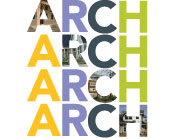Long Term Sustainability Monitoring
Another
element
of
monitoring
is to
create
an
ongoing
comprehensive
process
for
evaluating
and, as
needed,
helping
to improve
long
term
sustainability
of
housing
funded
through
the ARCH
Trust Fund.
Working
with property
owners
and
other funders,
ARCH will
undertake
regular
evaluations
of funded
properties.
This
work
will also
be used
to inform
evaluation
of
applications
of new
projects
requesting
funding
through
the
ARCH Trust
Fund,
and
to share
with
property
owners
lessons
learned and
best practices.
There
are
seven
areas
of
data collection
(Benchmarks)
that will be
used
as an
initial
step in assessing
long
term
sustainability
of developments
funded
through
the
ARCH Trust
Fund.
These include:
·
Vacancy
rate
·
Revenues
(scheduled
rent)
·
Expenses and
Management
Fees
·
Net
Operating
Income
and,
cash flow
(on
a
per
unit basis)
·
Reserve
contributions
and
balance
(building
condition)
·
Contingent
(soft)
Debt status
o
Deferred developer
fee;
o
ARCH
Debt
service;
These
Benchmarks
rely
primarily
on
data already
collected
by property
owners
in
order
to not create
added reporting
burdens
to owners.
It is also
noted that
many
owners
are already
doing
similar analysis
as part
of
their
day to
day
oversight
of
their
properties
and
ARCH’s
monitoring
in this area
will take
advantage
of
the
Owners’
existing
efforts.
·
Annually
update
of Benchmark
data
for
each
project
using
information
in the Annual
WBARS reports
and project
audits, and
supplemental
materials
requested
directly
from
owners
(off-site
management
fee,
balances
on
deferred developer
fee,
and
if available
capital
needs
assessment).
·
Analyze data
for
each project
relative
to
the following:
o
Thresholds
for
each Benchmark
o
Other like
properties
o
Prior
year performance
·
Develop
list
of projects
that warrant
some level
of
follow
up
with the
owner
and
other
public
funders regarding
long-term
sustainability/viability.
There
is no
explicit
cumulative
‘scoring’
system
for individual
projects.
This step does
not involve
making
conclusions
regarding
property
performance
or
strategies
to implement.
Its purpose
is to
determine
what properties
warrant
going
through
additional
review
as described
below.
·
To the
extent
practical,
do
on-site
visits
of projects,
especially
for
projects
identified
for follow
up
analysis.
Site
visits
will be
coordinated
with
property
inspections
already
being
done
by
other funders.
·
Share information
with
other
public
lenders,
and
determine
how
they
will
be involved
in follow
up
work
with property
owners.
·
For those
properties
identified
for further
evaluation,
meet
with the
property
owner
to:
o
Review
information
collected.
o
Seek
explanations
for
data results.
The goal
is to
understand
reasons
for
the
results and
discuss if additional
action
to
address
the findings
is warranted
or plausible.
o
Review
strategies
that the
owner
has already
been doing
or
considering.
o
Consider
additional
strategies
and what
would
be required
to implement.
A
number
of strategies
have
been
identified
that could
better
position
properties
for
long-term
viability/sustainability.
This
is meant
to
act as a
menu
of
strategies
to consider.
Not all strategies
are applicable
in all circumstances.
It is acknowledged
that in many
cases
owners
may have
already
initiated
some
of these
strategies.
The process
will allow
the
owner
to
share with
funders what
they have
already
done,
and
if so,
how
that is
working,
and if further
strategies
should
be considered.
Some
of these
strategies
are
ones
that can
be done
without
any
formal
changes
to existing
provisions
of agreements
with public
funders,
while
others
require
would
require revisions
to
existing
provisions
with public
funders.
· Keep
other
public
funders
informed
of
conversations
with the
owner,
either through
participation
in
meeting
or
by providing
meeting
notes.
· Depending
on
the
outcome
of
the initial
meeting
and types
of
strategies
discussed,
potential
follow
up activities
include:
o
For strategies
already
being
implemented,
monitor
results
on an
agreed
upon
time schedule.
o
For potential
‘internal’
strategies
(e.g.
improve
rental
income),
confirmation
from
owner
on
strategies
being
used and
time
period
for
monitoring
results.
o
For potential
‘external’
strategies
(e.g.
adjusting
reserve
funding
level),
follow
up with appropriate
stakeholders
to
evaluate
further
and implement
agreed upon
strategies.
· Include
results
of sustainability
monitoring
work
in
annual
monitoring
summary
reports
to member
cities.

